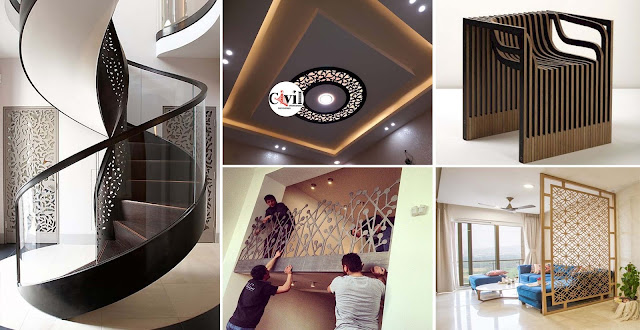Revolutionizing Interiors: The Rise of CNC Furniture
In the world of modern furniture design, technology plays a vital role in enhancing both creativity and efficiency. One of the most transformative innovations in this space is CNC furniture. Short for Computer Numerical Control, CNC refers to the automated control of machining tools by means of a computer. When applied to furniture making, CNC technology offers unmatched precision, customization, and design freedom—qualities that are redefining contemporary interiors.
What is CNC Furniture?
CNC furniture is created using CNC machines that cut, shape, and engrave materials based on digital designs. These machines follow exact instructions from CAD (Computer-Aided Design) files, ensuring high accuracy and repeatability. Whether it’s wood, MDF, acrylic, or even metal, CNC machines can process a wide range of materials, turning design concepts into functional pieces with intricate details and perfect symmetry.
This method has moved furniture making from traditional craftsmanship to digital craftsmanship—offering the best of both worlds: the precision of technology and the artistry of design.
Benefits of CNC Furniture
Precision and Consistency:
Unlike manual work, CNC machines eliminate human error. Each piece can be cut to exact specifications, which ensures uniformity across products—ideal for modular furniture or mass production.
Customization:
CNC allows for highly personalized designs. Whether you’re creating a one-of-a-kind wall panel or a set of geometric shelving units, CNC technology makes customization simple and cost-effective.
Speed and Efficiency:
CNC machining speeds up the production process significantly. Once the design is finalized, machines can quickly manufacture multiple units, reducing lead times and increasing output.
Sustainability:
Because of its precision, CNC cutting results in minimal waste. Materials are used more efficiently, which supports eco-friendly manufacturing practices—an important consideration in today’s environmentally conscious market.
Popular CNC Furniture Designs
CNC technology has inspired a range of unique furniture designs that would be difficult or impossible to achieve through traditional methods. Some popular applications include:
-
Parametric wall panels and room dividers
-
Intricately carved doors and cabinet fronts
-
Custom-cut plywood furniture (chairs, tables, shelving)
-
3D textured panels and decorative elements
These designs often have a modern, minimalist, or geometric appeal that’s particularly popular in urban and luxury interiors.
CNC in Interior Design and Architecture
Interior designers and architects increasingly collaborate with CNC workshops to bring ambitious design ideas to life. From residential living spaces to commercial environments like cafes and offices, CNC furniture offers solutions that are both aesthetic and functional. The ability to integrate lighting, ventilation, and wiring within the design also makes CNC ideal for multi-functional installations.
The Future of CNC Furniture
As digital tools become more accessible and user-friendly, we can expect to see even more innovation in CNC furniture design. The fusion of design software, automation, and sustainable materials is leading to smarter, more adaptive interiors. For customers, this means more design freedom, quicker turnarounds, and furniture that perfectly fits their lifestyle and space.
Conclusion
CNC Furniture Dubai is more than a trend—it’s a leap forward in how we create, customize, and experience our living spaces. Whether you're a homeowner looking for something unique or a designer aiming for precision, CNC offers the tools to bring creative visions to life with stunning accuracy and style.



Comments
Post a Comment